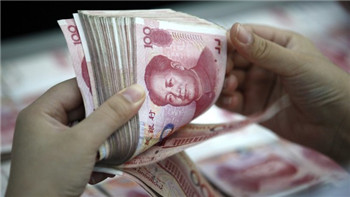(单词翻译:单击)

If the People’s Bank of China sets a softer dollar rate for the renminbi on Monday it will mark a record run of weakening and be a further sign that Beijing is increasingly measuring its currency’s performance not against the US but a broader range of its peers.
如果中国人民银行(PBoC)周一设定一个更低的人民币兑美元汇率,那将标志着人民币连续走低的天数打破纪录,并且进一步表明,北京方面日趋以更广泛的一篮子货币(而不仅仅是美元)来衡量人民币的表现。
China’s central bank has “fixed” the renminbi at a lower rate against the dollar for each of the past 10 trading days, weakening its currency at a faster pace over that period than at any time since it first allowed it to appreciate in 2005. Over the past fortnight the renminbi has lost 1.5 per cent against the US currency.
中国央行在过去10个交易日设定的人民币兑美元中间价一天比一天低,在此期间引导人民币走弱的速度超过自2005年允许人民币升值以来的任何时候。过去两周,人民币兑美元汇率下降了1.5%。
Analysts said that although the straight-line direction was unusual for Beijing, it reflected a well-telegraphed desire by the People’s Bank of China to show it was not overly focused on the dollar.
分析师们表示,虽然这种直线方向对北京方面来说是不寻常的,但它反映了中国央行之前充分表达的愿望,即它不再过分专注于美元。
“The dollar itself has been strengthening so this move reflects that to some extent, although normally the PBOC likes to instil a degree of two-way risk,” said Mitul Kotecha, head of Asia currency and rates strategy at Barclays. “Having a steadily weaker fix like this suggests that aversion to speculators has been put on the back burner for now.”
“美元本身已经走高,因此此举在一定程度上反映了这一点,尽管正常情况下中国央行喜欢注入一定程度的双向风险,”巴克莱(Barclays)亚洲外汇和利率策略主管米图尔科特查(Mitul Kotecha)表示。“像这样引导中间价逐日走低似乎表明,对投机者的厌恶已被暂时搁置。”
Earlier this month, Beijing surprised markets when it announced that it would measure the renminbi against a basket of currencies. Although the basket is more of a guide than a technical standard, the move was seen as further confirmation the PBOC wanted to draw attention away from the dollar rate.
本月早些时候,北京方面宣布将根据一篮子货币的价值来衡量人民币,此举令市场感到意外。虽然这个篮子在更大程度上是一种指引,而不是技术标准,但此举被视为进一步证实中国央行希望把市场的注意力从人民币兑美元汇率引开。
The renminbi’s close dollar ties mean it is in fact one of the world’s strongest performers against the surging US currency this year, having lost just 4.5 per cent to date at Rmb6.4811. Among China’s trading partners, the euro has lost 10 per cent against the dollar, the Australian dollar 12 per cent and the Korean won, 7 per cent.
人民币与美元密切挂钩意味着,今年以来,在美元强劲走高的背景下,人民币实际上是世界上最坚挺的货币之一,今年迄今兑美元仅下降4.5%,至1美元兑6.4811元人民币。在中国的贸易伙伴中,欧元兑美元汇率下降了10%,澳元兑美元下降了12%,韩元兑美元下降了7%。
Investors and analysts expect the renminbi to slip further still. The gap between the currency’s dollar rate offshore and the more restricted onshore market has widened recently which implies international markets are pricing in more weakening.
投资者和分析师预计,人民币还将进一步下滑。最近,人民币兑美元离岸汇率和更受限制的在岸汇率之差有所加大,这意味着国际市场预计人民币将进一步走低。
But the softness means Beijing must tread carefully between allowing the weakness that would help its exporters and the risk that capital flight intensifies.
但是,人民币的这种弱势意味着,北京方面必须在允许人民币走弱以帮助中国出口企业和导致资本外逃加剧的风险之间谨慎把握。
“Capital outflows look uncomfortably strong but the PBoC seems to realise it’s not the best policy to keep fully accommodating that [by drawing down its reserves],” said Mansoor Mohi-uddin, senior market strategist at RBS in Singapore.
“资本外流看起来强劲得令人不安,但中国央行似乎意识到,(动用储备)以继续迎合不是上策,”苏格兰皇家银行(RBS)驻新加坡高级市场策略师曼苏尔莫希-乌丁(Mansoor Mohi-uddin)表示。
The PBoC’s $3.5tn reserves fell by a record $94bn in August as it sought to stem the impact of a surge in outflows following its bungled devaluation. Although reserves had stabilised by October, they fell another $87bn last month, implying capital was once again leaving the country.
中国央行3.5万亿美元的外汇储备在今年8月减少创纪录的940亿美元,原因是该机构在鲁莽地实施引导人民币走低举措后试图阻止资本外流激增。尽管外汇储备在10月企稳,但上月再度减少870亿美元,意味着资本再度离开中国。


